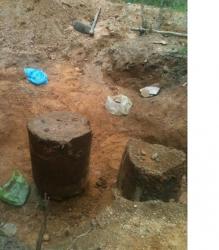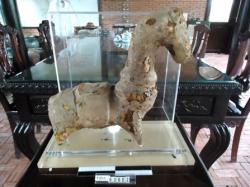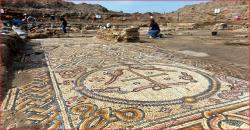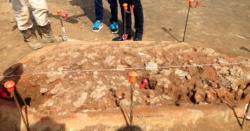INSTITUT SUPERIEUR D'ANTHROPOLOGIE
INSTITUTE OF ANTHROPOLOGY
ONLINE COURSES / COURS A DISTANCE
SUMMER TERM : JULY 2014
REGISTER NOW
USA –  Oregon - Klamath woman wearing traditional basket hat, circa 1920s. Baskets of these types date back more than 10,000 years in the region.In 1937, with a handful of adventurous students, Cressman uncovered one of the greatest sites in the history of North American archaeology. Deep in Southeast Oregon, he excavated a series of rural caves. Over time, these sites have produced artifacts like sandals, basketry, camel bones, tools and coprolite (dried feces). When carbon dated, these discoveries completely changed the scientific timeline of when the first “North Americans” arrived on the continent. Here’s some context: Sandals he found (now known as Fort Rock sandals) were nearly 10,000 years old. That means they were made before the pyramids, before written language, before the first-known wheel. The oldest found coprolite is about 14,600 years old. The Klamath Tribes have been making basket hats, like the one pictured, for thousands of years. Baskets were woven from natural materials and used for a variety of things. The earliest woven artifact from Oregon is a strand of braided sagebrush bark from Paisley Caves directly dated to ~12,000 years ago.
Oregon - Klamath woman wearing traditional basket hat, circa 1920s. Baskets of these types date back more than 10,000 years in the region.In 1937, with a handful of adventurous students, Cressman uncovered one of the greatest sites in the history of North American archaeology. Deep in Southeast Oregon, he excavated a series of rural caves. Over time, these sites have produced artifacts like sandals, basketry, camel bones, tools and coprolite (dried feces). When carbon dated, these discoveries completely changed the scientific timeline of when the first “North Americans” arrived on the continent. Here’s some context: Sandals he found (now known as Fort Rock sandals) were nearly 10,000 years old. That means they were made before the pyramids, before written language, before the first-known wheel. The oldest found coprolite is about 14,600 years old. The Klamath Tribes have been making basket hats, like the one pictured, for thousands of years. Baskets were woven from natural materials and used for a variety of things. The earliest woven artifact from Oregon is a strand of braided sagebrush bark from Paisley Caves directly dated to ~12,000 years ago.
http://www.opb.org/artsandlife/series/historical-photo/oregon-historical-photo-10000-hat/
INDE –  Sree Padmanabhaswamy Temple - State archaeology department officials started the excavation work on Monday to study the archaic and historic facts behind the three underground rocky footsteps identified at the north entry of the Sree Padmanabhaswamy Temple.State archaeology department director G Premkumar said the three underground rocky footsteps and burnt red bricks identified probably leads to an underground chamber or an underground building there. The road work has been stalled for further studies to ascertain the rare find and a team led by archaeology department official Mohanachandran has begun the excavation, he said. Temple officials said it could lead to an underground pond that was encroached upon.Meanwhile, the work of laying bollards and road blockers at the east and west entry of the temple has been completed as part of security measures. The work to lay road blockers at the south gate entry is on but along the north gate entry it has been stalled after finding the three underground rocky footsteps, said temple chief security officer Sukumaran Pillai.Along three bylane roads at Thiruvambadi in the north-east side, at Chottupura between south and west gate entrance and at Ananthankadu between north and west entry gate of the temple, the bollards have been laid. Along the main gate at the East Fort, some drainage pipes have been found and they have to be removed for further work. The work of laying bollards and blockers is expected to be over by mid-May, he said.
Sree Padmanabhaswamy Temple - State archaeology department officials started the excavation work on Monday to study the archaic and historic facts behind the three underground rocky footsteps identified at the north entry of the Sree Padmanabhaswamy Temple.State archaeology department director G Premkumar said the three underground rocky footsteps and burnt red bricks identified probably leads to an underground chamber or an underground building there. The road work has been stalled for further studies to ascertain the rare find and a team led by archaeology department official Mohanachandran has begun the excavation, he said. Temple officials said it could lead to an underground pond that was encroached upon.Meanwhile, the work of laying bollards and road blockers at the east and west entry of the temple has been completed as part of security measures. The work to lay road blockers at the south gate entry is on but along the north gate entry it has been stalled after finding the three underground rocky footsteps, said temple chief security officer Sukumaran Pillai.Along three bylane roads at Thiruvambadi in the north-east side, at Chottupura between south and west gate entrance and at Ananthankadu between north and west entry gate of the temple, the bollards have been laid. Along the main gate at the East Fort, some drainage pipes have been found and they have to be removed for further work. The work of laying bollards and blockers is expected to be over by mid-May, he said.
http://timesofindia.indiatimes.com/city/thiruvananthapuram/Excavation-on-to-identify-underground-stairs-of-Sree-Padmanabhaswamy-temple/articleshow/34372697.cms
VIET NAM – 
 Ta Binh - Ethnic people in a Quang Nam Province commune discovered a trove of ancient relics they later threw away or gave to children as toys. The Co Tu minority people were digging the foundation of a new home in a resettlement area in Nam Giang District's Ta Binh ward when they struck a trove of pottery pieces, vases, strings and pots buried under the ground. Most of the relics were thrown away, some agate beads given to children as toys. A group of archaeologists from the Sa Huynh Culture Museum recently spent hours excavating the site, unearthing relics they believe belonged to the Sa Huynh civilization. Archaeologists dug up a single urn containing jewelry, precious stones and an iron statue of a horse. The statue dated back between 2,000-2,500 years. Considered one of the most prominent ancient Vietnamese cultures of the Iron Age, the Sa Huynh civilization is believed to have flourished between 1000BC and 200AD in central and southern Vietnam. Relics from the Sa Huynh have been discovered along the the coastal sites of central Vietnam. These were the first Sa Huynh ever discovered in the mountainous Nam Giang district which lies near the border between Vietnam and Lao.
Ta Binh - Ethnic people in a Quang Nam Province commune discovered a trove of ancient relics they later threw away or gave to children as toys. The Co Tu minority people were digging the foundation of a new home in a resettlement area in Nam Giang District's Ta Binh ward when they struck a trove of pottery pieces, vases, strings and pots buried under the ground. Most of the relics were thrown away, some agate beads given to children as toys. A group of archaeologists from the Sa Huynh Culture Museum recently spent hours excavating the site, unearthing relics they believe belonged to the Sa Huynh civilization. Archaeologists dug up a single urn containing jewelry, precious stones and an iron statue of a horse. The statue dated back between 2,000-2,500 years. Considered one of the most prominent ancient Vietnamese cultures of the Iron Age, the Sa Huynh civilization is believed to have flourished between 1000BC and 200AD in central and southern Vietnam. Relics from the Sa Huynh have been discovered along the the coastal sites of central Vietnam. These were the first Sa Huynh ever discovered in the mountainous Nam Giang district which lies near the border between Vietnam and Lao.
http://www.thanhniennews.com/entertainment/2500-years-burial-relics-accidentally-unearth-in-central-vietnam-25692.html
TUNISIE –  Monastir - Une découverte archéologique majeure : un monument datant de l’époque byzantine du VII-VIII siècles, a été déterré à Skanès dans le gouvernorat de Monastir - Cette découverte fait suite à des fouilles préventives, après l’appel d’un propriétaire qui avait trouvé des vestiges dans son terrain en janvier 2014. Selon des archéologues tunisiens, ce site est une découverte majeure pour l’Antiquité tardive en Tunisie. Il confirme les récits d’historiens anciens sur la présence d’une communauté chrétienne à Monastir. De grosses amphores de stockage de marchandises et beaucoup d’objets en verre, notamment des coupelles en verre antique, ainsi qu’un nombre important de la monnaie en circulation à l’époque ont été récupérés. Les Romains appelaient Monastir Ruspina et les Arabes Monastir , « ce qui laisse sous-entendre qu’il y avait un ou des monastères dans la ville et cette galerie, ainsi que ces objets, confirment cette appellation », indique Hajer Krimi, chargée des recherches archéologiques et historiques à l’Institut National du Patrimoine de Monastir.
Monastir - Une découverte archéologique majeure : un monument datant de l’époque byzantine du VII-VIII siècles, a été déterré à Skanès dans le gouvernorat de Monastir - Cette découverte fait suite à des fouilles préventives, après l’appel d’un propriétaire qui avait trouvé des vestiges dans son terrain en janvier 2014. Selon des archéologues tunisiens, ce site est une découverte majeure pour l’Antiquité tardive en Tunisie. Il confirme les récits d’historiens anciens sur la présence d’une communauté chrétienne à Monastir. De grosses amphores de stockage de marchandises et beaucoup d’objets en verre, notamment des coupelles en verre antique, ainsi qu’un nombre important de la monnaie en circulation à l’époque ont été récupérés. Les Romains appelaient Monastir Ruspina et les Arabes Monastir , « ce qui laisse sous-entendre qu’il y avait un ou des monastères dans la ville et cette galerie, ainsi que ces objets, confirment cette appellation », indique Hajer Krimi, chargée des recherches archéologiques et historiques à l’Institut National du Patrimoine de Monastir.
http://www.leconomistemaghrebin.com/2014/05/02/tunisie-monastir-decouverte-archeologique/
FRANCE –  Saint-Quentin-la-Motte-Croix-au-Bailly - SGD, leader mondial de la fabrication de flacons en verre pour le parfum et le secteur pharmaceutique, avait besoin d’espace pour se développer. Le groupe a trouvé un terrain à quelques kilomètres seulement de son usine de Mers-les-Bains, sur le parc environnemental d’activités Gros-Jacques. Avant de débuter les travaux, c’est obligatoire, une fouille est lancée.Le mois dernier, l’entreprise déchante : les archéologues découvrent un village gaulois et une route de l’époque romaine. La découverte historique est importante mais l’enjeu économique l’est tout autant.Les fouilles seront bien menées, mais les archéologues n’auront que trois mois pour travailler. Pour accélérer les recherches, les équipes sont renforcées : 25 archéologues mobilisés, c’est du jamais vu pour le responsable de l’INRAP
Saint-Quentin-la-Motte-Croix-au-Bailly - SGD, leader mondial de la fabrication de flacons en verre pour le parfum et le secteur pharmaceutique, avait besoin d’espace pour se développer. Le groupe a trouvé un terrain à quelques kilomètres seulement de son usine de Mers-les-Bains, sur le parc environnemental d’activités Gros-Jacques. Avant de débuter les travaux, c’est obligatoire, une fouille est lancée.Le mois dernier, l’entreprise déchante : les archéologues découvrent un village gaulois et une route de l’époque romaine. La découverte historique est importante mais l’enjeu économique l’est tout autant.Les fouilles seront bien menées, mais les archéologues n’auront que trois mois pour travailler. Pour accélérer les recherches, les équipes sont renforcées : 25 archéologues mobilisés, c’est du jamais vu pour le responsable de l’INRAP
http://www.francebleu.fr/infos/archeologie/les-gaulois-font-de-la-resistance-face-saint-gobain-1487407